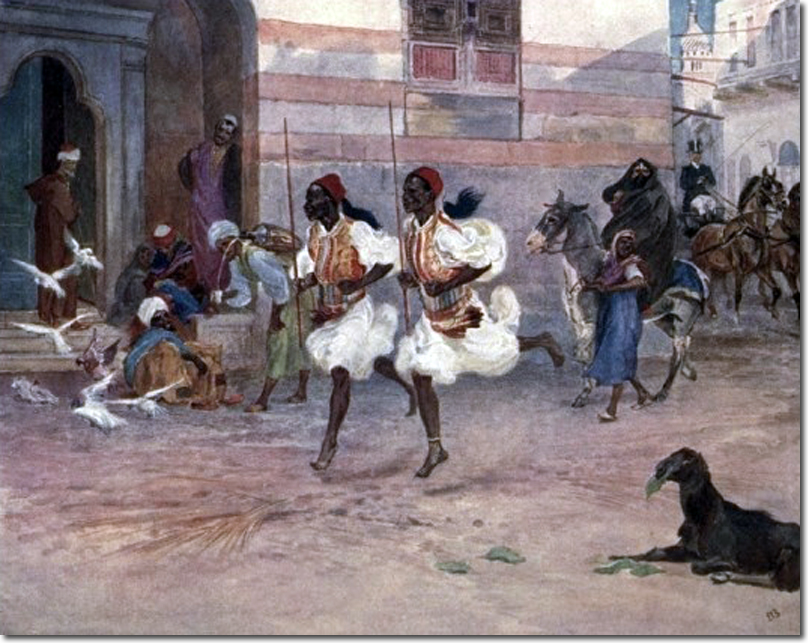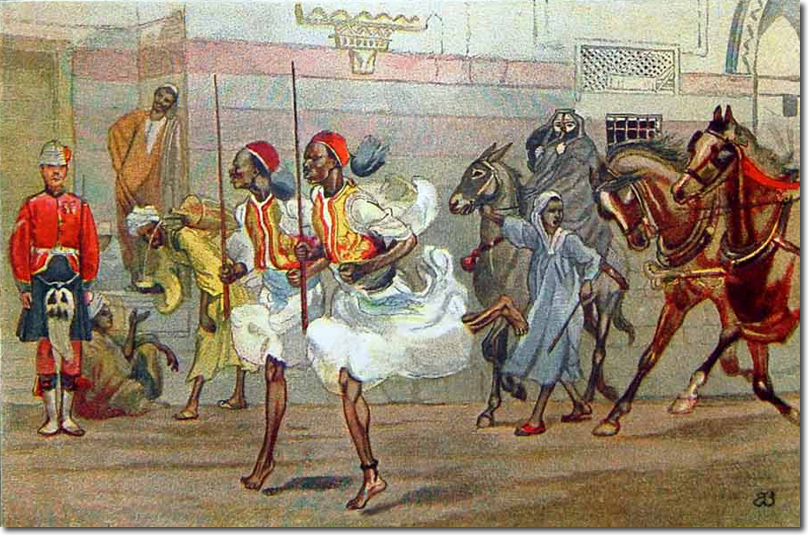|
|

 |
| Elizabeth Butler toured Egypt in 1885 and 1886 where she painted extensively. She was fascinated by the sights and sounds of this exotic culture. She referred to the role of Syces in her From Sketch-Book And Diary about her travels in Egypt. She wrote:
"Of all the figures that delighted me in Cairo those of the syces soon became first favourites. The dress, the springing run, the beauty of the movements—I don’t think the human figure could be more charmingly shown off. The English General’s syces alone wear the scarlet jacket, and deep indigo blue or maroon are the usual colours for the liveries of those mercuries. Our fast-trotting horses now try them too much, and we don’t let them run very far, but take them up after a little while. They were intended to trot before the ambling horses or donkeys of Pashas, to clear the way with shouts and sticks through the crowded bazaars. I saw a lady (alas!) driving a very fast English horse past Shepheard’s in a rakish T-cart, and the unfortunate syce was constantly on the point of being knocked down by the high-stepper. It did not add to the smartness of this turn-out to see this panting creature looking over his shoulder every minute in terror of the horse, and sometimes, when flagging in his run, being overtaken and having to run alongside. I levelled mental epithets at the thoughtless driver, and wondered how such a thing could be. Some of us are curiously inconsiderate. I am afraid she was but a type of many. Witness the suffering horses bitted up with tight bearing-reins standing for hours outside shops and smart houses where “at homes” are going on, when a word from the fair owners to their ignorant coachmen might procure ease for their miserable beasts. I am not enthusiastic about motors, but I am thankful for the fact that they are greatly reducing the sufferings of our poor “gees.” I hope by and by the motor will be made noiseless and odourless, for at present I cannot enjoy its country driving. The scents of the country are replaced by smell and the sounds by noise." Her painting was adapted for use in British publications to make it even more Anglo-centric in view of the British takeover in Egypt. Below you can see an example of how it was modified |
 |
Elizabeth Butler Artist of Empire Article | Lady Butler Biography
Armed Forces | Art and Culture | Articles | Biographies | Colonies | Discussion | Glossary | Home | Library | Links | Map Room | Sources and Media | Science and Technology | Search | Student Zone | Timelines | TV & Film | Wargames